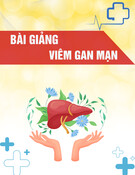
TẠP CHÍ Y häc viÖt nam tẬP 545 - th¸ng 12 - sè 3 - 2024
329
Szymanska M. Clinical Effectiveness of Bulk-Fill
and Conventional Resin Composite Restorations:
Systematic Review and Meta-Analysis. Polymers
(Basel). 2020 Aug 10;12(8):1786.
3. FDI. World Dental Federation - clinical criteria for
the evaluation of direct and indirect restorations.
Update and clinical examples
4. Van Dijken JWV, Pallesen U. Posterior bulk-
filled resin composite restorations: A 5-year
randomized controlled clinical study. J Dent. 2016
Aug;51:29–35.
5. Kwon Y, Ferracane J, Lee IB. Effect of layering
methods, composite type, and flowable liner on
the polymerization shrinkage stress of light cured
composites. Dent Mater. 2012 Jul;28(7):801–9.
6. Abbas G, Fleming GJP, Harrington E,
Shortall ACC, Burke FJT. Cuspal movement
and microleakage in premolar teeth restored with
a packable composite cured in bulk or in
increments. J Dent. 2003 Aug;31(6):437–44.
7. Berkowitz G, Spielman H, Matthews A, Vena
D, Craig R, Curro F, et al. Postoperative
hypersensitivity and its relationship to preparation
variables in Class I resin-based composite
restorations: findings from the practitioners
engaged in applied research and learning (PEARL)
Network. Part 1. Compend Contin Educ Dent.
2013 Mar;34(3):e44-52.
8. M.G. Vianna-de-Pinho, G.F. Rego, M.L. Vidal,
R.C.B. Alonso, L.F.J. Schneider, L. M.
Cavalcante, Clinical time required and internal
adaptation in cavities restored with bulk-fill
composites, J. Contemp. Dent. Pract. 18 (2017)
1107–1111.
9. Güler E, Karaman E. Cuspal deflection and
microleakage in pre molar teeth restored with bulk-
fill resin-based composites. Journal of Adhesion
Science and Technology. 2014 Jul 29;28.
TĂNG ÁP LỰC ĐỘNG MẠCH PHỔI VÀ MỘT SỐ YẾU TỐ LIÊN QUAN
Ở BỆNH NHÂN XƠ CỨNG BÌ HỆ THỐNG
Nguyễn Thu Thủy1, Nguyễn Văn Hùng1,2, Tạ Thị Hương Trang1,2
TÓM TẮT81
Xơ cứng bì hệ thống (XCBHT) là một bệnh rối
loạn mô liên kết hiếm gặp. Mặc dù đã có nhiều tiến bộ
trong chẩn đoán và điều trị nhưng bệnh XCBHT vẫn
gây ra sự suy giảm đáng kể về chất lượng cuộc sống
và tỉ lệ tử vong cao. Tổn thương phổi rất thường gặp
ở bệnh XCBHT, tăng áp lực động mạch phổi (TALĐMP)
là một trong hai biểu hiện chính của tổn thương phổi
ở bệnh nhân XCBHT và là nguyên nhân chính gây tử
vong ở nhóm bệnh nhân này.1 Mục tiêu nghiên
cứu: Mô tả triệu chứng lâm sàng, cận lâm sàng tăng
áp lực động mạch phổi ở bệnh nhân xơ cứng bì hệ
thống và nhận xét một số yếu tố liên quan. Đối
tượng và phương pháp nghiên cứu: nghiên cứu
mô tả, cắt ngang trên 75 bệnh nhân được chẩn đoán
XCBHT theo tiêu chuẩn ACR/EULAR 2013 đến khám
bệnh hoặc điều trị nội trú tại Bệnh viện Bạch Mai từ
tháng 09/2023 đến tháng 08/2024. Kết quả: Tỉ lệ
TALĐMP ở bệnh XCBHT 47,95%. Bệnh nhân có tình
trạng khó thở theo NYHA càng cao, mạch càng tăng
thì có tỷ lệ TALĐMP càng cao với p<0,05. Bệnh nhân
có ho khan có nguy cơ TALĐMP gấp 2,7 lần (95% CI:
1,1-7,0; p=0,035), có hồi hộp trống ngực thì nguy cơ
TALĐMP gấp 3,7 lần (95% CI: 1,4-10,1; p=0.008), có
chỉ số CRP tăng có TALĐMP gấp 7,6 lần đối tượng có
chỉ số CRP bình thường (95% CI: 2,4-24,3; p<0,001).
Kết luận: Tỉ lệ mắc TALĐMP ở bệnh nhân XCBHT
1Trường Đại học Y Hà Nội
2Bệnh viện Bạch Mai
Chịu trách nhiệm chính: Tạ Thị Hương Trang
Email: trangntnoi@yahoo.com
Ngày nhận bài: 17.9.2024
Ngày phản biện khoa học: 21.10.2024
Ngày duyệt bài: 10.12.2024
trong nghiên cứu của chúng tôi khá cao, và tăng nguy
cơ mắc TALĐMP ở các nhóm đối tượng có triệu chứng
lâm sàng khó thở, ho khan, hồi hộp trống ngực, mạch
nhanh, CRP tăng.
Từ khóa:
Tăng áp lực động mạch
phổi, xơ cứng bì hệ thống
SUMMARY
PULMONARY ARTERIAL HYPERTENSION
AND SOME RELATED FACTORS IN
SYSTEMIC SCLEROSIS PATIENTS
Systemic scleroderma (SSc) is a rare connective
tissue disorder. Although there have been many
advances in diagnosis and treatment, systemic
scleroderma still causes a significant deterioration in
quality. life and high mortality rate. Lung damage is
very common in SSc patients. Pulmonary hypertension
is one of the two main manifestations of lung damage
in SSc patients and is the main cause of death in this
group of patients.1 Research objective: Describe
clinical and paraclinical symptoms of pulmonary
arterial hypertension (PAH) in scleroderma patients
and comment on some related factors. Research
subjects and methods: descriptive, cross-sectional
study of 75 patients diagnosed with scleroderma
according to ACR/ EULAR 2013 criteria who came for
medical examination or inpatient treatment at Bach
Mai Hospital from September 2023 to October. August
2024. Results: The rate of PAH in SSc disease is
47.95%. Patients with higher NYHA dyspnea and
increased pulse have a higher rate of PAH with
p<0.05. Patients with dry cough have a 2.7 times
higher risk of PAH (95% CI: 1.1-7.0; p=0.035), and
with palpitations, the risk of PAH is 3.7 times higher
(95% CI): 1.4-10.1; p=0.008), subjects with increased
CRP index had pulmonary hypertension 7.6 times
higher than subjects with normal CRP index (95% CI:








































